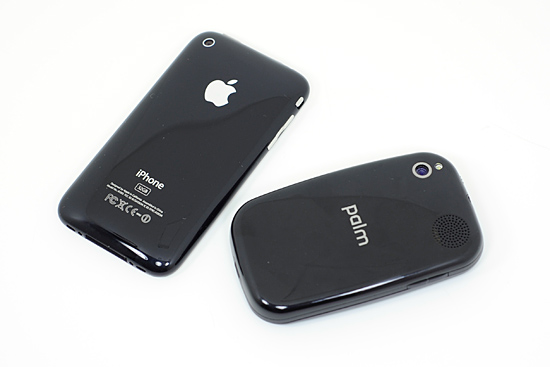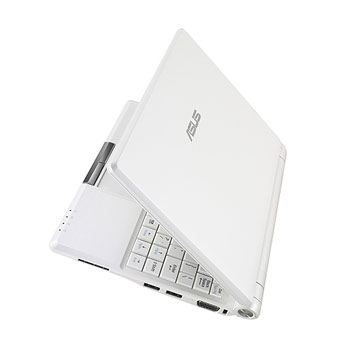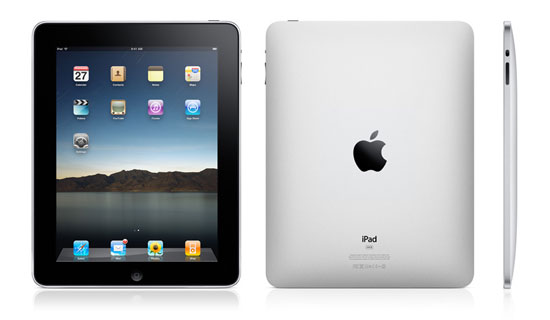The Apple iPad - Anand's Analysis
by Anand Lal Shimpi on January 27, 2010 5:00 PM EST- Posted in
- Smartphones
- Mobile
About a decade ago Mike Andrawes and I kept hoping someone would come out with a device that would make surfing the web on the couch easier than it was. Mike took the notebook route. He kept buying (or stealing from me) notebooks that were cooler, thinner and lighter while still being a notebook, for the purpose of browsing the web.
I took a more extreme route. I tried ultraportables. I bought a Sony PictureBook. It had a Transmeta Crusoe processor in it, which was horribly slow but gave me the form factor and battery life I craved. I put up with a ridiculously impractical screen just to get something small to browse the web and do work on.
Matthew Witheiler, another AnandTech veteran took a different path. He embraced the tablet PC. Matt became our Tablet PC reviewer on AnandTech as he searched for the perfect device. Unfortunately, he never found it.
None of us did. Today we all went back to the tried and true device: the notebook. The iPhone came along and gave us a revolution in the smartphone space. Ultimately it and the devices that followed just complemented our notebooks - sometimes with a new level of frustration as we were now at the mercy of wireless carriers and ridiculously slow SoCs.

The smartphone revolution gave us some great devices
History likes to repeat itself, and that’s what we’ve seen happen over the past two years. The introduction of the netbook brought the journey full circle. People wanted a cheap, light, portable web surfing and light work device - the netbook did just that.
The keyboard and screen issues have been mostly solved. Performance still sucks and part of that is due to the fact that there are no good netbook OSes that are optimized for the level of performance a 1.6GHz Atom can deliver. Most OEMs ship some variant of Windows on these devices, and with less than 2GB of memory and a single-core in-order CPU, that’s just too much to be fast.

Back to ultraportables again
There’s also the issue of storage. Netbooks desperately need solid state storage, but a single 2.5” SSD is often over half the price of a netbook itself. Pair up a slow CPU with not enough memory and a really slow hard drive and it’s not a good combination.
Microsoft, Intel and Apple have all taught me one very important lesson over the past 13 years: if you’re going after a new usage model, you need new technology to tackle it. For Microsoft and Apple that meant a new UI with Media Center and the iPhone. For Intel it meant a brand new microarchitecture optimized for power efficiency. First with Banias (Pentium M/Centrino) and then with Atom.
Netbooks, and to a greater extent tablets, eReaders and smartbooks, are going after new usage models. These aren’t notebook replacements, they are a new category of device designed for a different usage model. The one thing they’ve all been missing is the perfect combination of hardware and software to deliver the whole package.
The one thing Apple prides itself on is doing just that. As one of very few one-stop hardware/software makers, it has the ability to tightly couple UI with physical design. We saw it manifest in its greatest way with the iPhone, and now Apple (or perhaps the media covering Apple) is attempting to recreate the magic with the iPad.

The final frontier?
The device doesn’t ship for another 60 days, but there’s a lot to talk about based on today’s introduction alone.










155 Comments
View All Comments
autoboy - Wednesday, January 27, 2010 - link
I've got a powerful notebook connected to real monitors I take between home and work, my blackberry on the go, and my netbook around the house and when I'm traveling.Yes the netbook sacrifices performance while traveling, but it is a full PC when I need it, and a long lasting casual web browser when I'm on the couch. Because the iPad is just an upscaled iPhone, it will never be able to replace my notebook while traveling. The netbook can. So, instead of carrying a heavy notebook with limited battery, my phone, AND a iPad for casual entertainment, I can carry just my phone and my netbook while only losing a bit of all out performance.
NullSubroutine - Wednesday, January 27, 2010 - link
I'm going to have to agree with you about wondering this is going to fit in peoples lives. Personally I have a powerful desktop and a once top of the line 17" laptop, I don't have a smart phone or such device as I don't travel or move around all that much, nor do I have a workplace that would sync will with it.I do have a PSP (slim 2000) I use for occasional trips, so I can watch movies, listen to music, or play some games. For me this device could be something that could fit well because I don't have a very mobile laptop nor a smart phone.
However it doesn't take the place of my portable media device, as it doesn't watch movies outside of the iTunes store, and can't display its graphics to a larger screen (like a laptop could). To me this devices sacrifices far too many qualities (really it is versatility) with low end laptops or net books while not really enhancing what current things do. It really is just a bigger screened iTouch/iPhone, which really doesn't appeal to me.
What this needs is more multimedia capabilities. More connections, ports, software support (or allow developers to add more) for file types, and playback of something more than just 720p content.
ltcommanderdata - Thursday, January 28, 2010 - link
If it's anything like iPods or iPhones, then multimedia content doesn't have to come from the iTunes Store. It should be able to play non-iTunes Store music or video although some re-encoding might be necessary.The iPad now actually has officially sanctioned external monitor capability as part of the SDK from early reports. You'll need the proper cable to connect to the dock though.
OBLAMA2009 - Wednesday, January 27, 2010 - link
the tablet format does have some appeal for internet surfing. just not having to fold a laptop open makes you more likely to use it for light surfing. but it still needs mobile wireless and a faster boot upOBLAMA2009 - Wednesday, January 27, 2010 - link
o phuck they are offering att wireless 3g for 15 a month or 30 unlimited. that is a pretty good deal. maybe this thing will sell, but ill still wait for the ipad s versiondeputc26 - Wednesday, January 27, 2010 - link
Given it has 20.833x the battery capacity of the iPhone, I'm going to go ahead and guess that the IPS screen is a huge e- hog. Especially if speculation that the A4 is a 45nm single-core chip is correct. (and Apple would have said if it was dual core I think). Waiting for the OLED model with 15hr bat life.deputc26 - Wednesday, January 27, 2010 - link
Edit: Nice write up Anand, exactly what I was hoping you'd cover, really just verified I hadn't missed anything, the SOC was the big question for myself as well.autoboy - Wednesday, January 27, 2010 - link
Agreed. Thanks Anand. Always a pleasure to read your opinion. But, I have to disagree somewhat. This post was really easy on my netbook while listening to pandora and editing my word documents.gusc3669 - Wednesday, January 27, 2010 - link
The product seems to have potential (in future versions, perhaps). While this may appeal to couch potatoes everywhere (myself included), without actually seeing in its full glory, it seems too much like an expensive, high-end netbook. Perhaps it will be able to run some better apps once they are designed for it or be used instead of a textbook in classes. I'll just have to wait (a few years) and see.Lonyo - Wednesday, January 27, 2010 - link
There's a just under $500 Netbook out there called the Asus Eee T91.It's a netbook, but its also a tablet.
Given that the $500 price point is hittable by existing netbook tablets which run a full OS with multitasking capability, it doesn't really seem unreasonable that going forward there will be more products in this class.
Also with the one month standby time, I expect my regular laptop might be able to get close to that with Windows Vista or Windows 7. Using hybrid sleep they can wake up instantly from sleep mode and be instantly ready. I would assume that a function like that would be workable into the iPhone OS for the tablet, and basically have a similar function.
Given the fact that it doesn't really need to be on, unlike a phone which needs to be ready to take calls etc, it seems like an off bt with power to RAM type mode would make sense to give tremendous standby time.